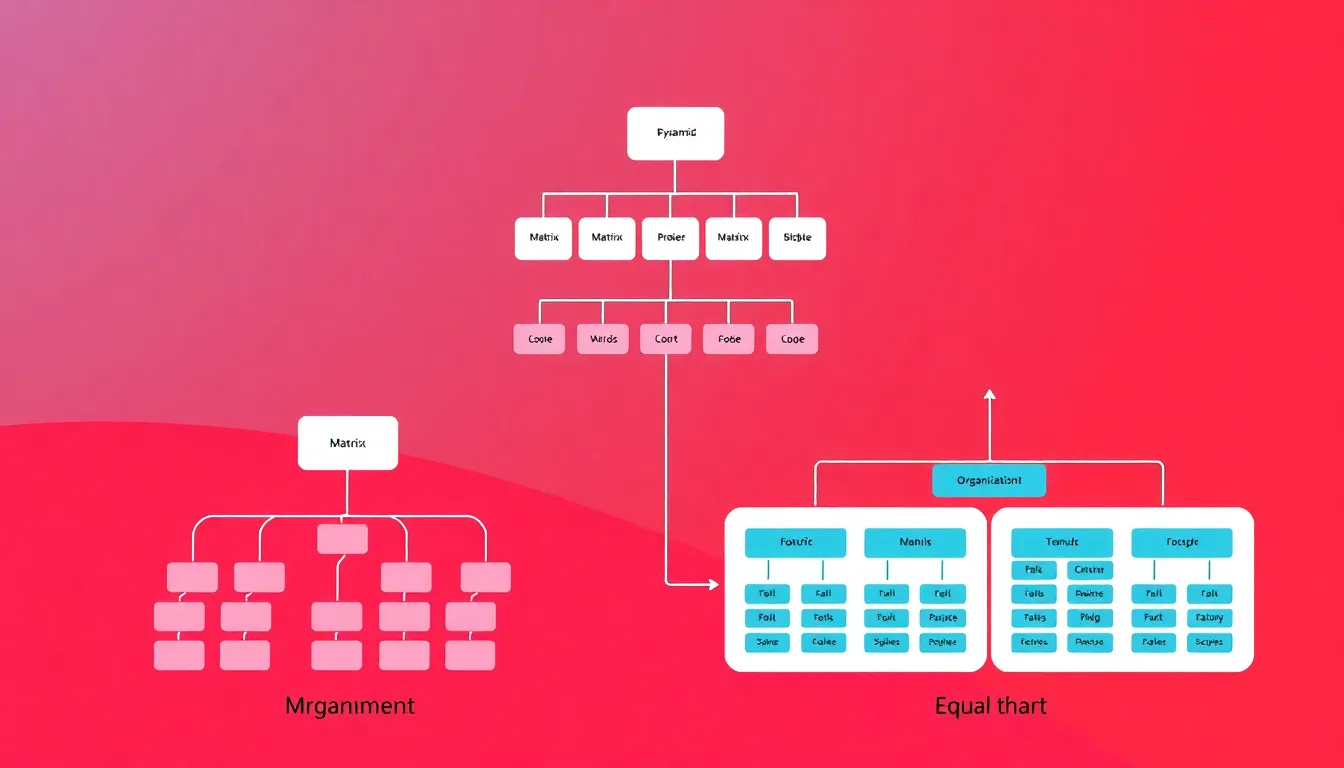Table of Contents
ToggleIn the chaotic world of business, an organization chart is like a GPS for navigating the corporate jungle. It helps employees find their way through the maze of roles and responsibilities, ensuring no one ends up in the wrong meeting—unless they really want to. Think of it as the family tree of the workplace, minus the awkward holiday dinners and questionable paternity tests.
What Is an Organization Chart?
An organization chart is a visual representation of a company’s structure. This diagram shows the relationships between various roles, departments, and teams within the organization. It displays reporting lines, indicating who reports to whom, which helps clarify roles and responsibilities.
The chart acts as a roadmap, guiding employees through their positions and connections. Companies often use organization charts during onboarding to quickly familiarize new hires with the team’s hierarchy. Additionally, this tool assists in identifying gaps in communication and workflow, which leads to increased efficiency.
In essence, an organization chart functions like a family tree but for the workplace. It outlines formal authority while showcasing informal relationships. Employees can easily see their supervisors, their peers, and relevant teams, promoting collaboration and reducing confusion.
Many formats exist for organization charts, including hierarchical, matrix, and flat structures. Hierarchical charts emphasize a top-down approach, while matrix charts illustrate cross-functional teams. Flat structures often suit smaller organizations and startups, highlighting employee autonomy.
Organization charts serve critical purposes in any business. They enhance understanding of organizational dynamics and facilitate smoother operations. By providing visibility into the structure, these charts support employees in their daily tasks and long-term goals.
Types of Organization Charts

Organization charts come in various types, each designed to suit different business structures and needs. Understanding these types helps clarify roles and responsibilities within an organization.
Hierarchical Organization Chart
A hierarchical organization chart displays levels of authority in a pyramid format. The chart starts with top management at the top and flows downwards to lower-level employees. This structure clearly outlines reporting relationships, enabling employees to know who oversees whom. Hierarchical models frequently foster clear lines of communication and efficient decision-making. For example, larger organizations often utilize this structure to ensure all staff members understand their chain of command.
Matrix Organization Chart
A matrix organization chart incorporates multiple reporting lines, creating a more flexible structure. Employees often report to both a functional manager and a project manager. This dual reporting can enhance collaboration across departments while allowing for effective resource allocation. For instance, professionals working on cross-functional teams can leverage their specialized skills while maintaining department relationships. Organizations that require adaptability frequently benefit from this orientation.
Flat Organization Chart
A flat organization chart reduces levels of management, promoting a more egalitarian approach. Employees in this structure often have a wider range of responsibilities, as fewer layers between them and senior leaders exist. This format encourages open communication and collaboration, as everyone feels more equally valued. Startups and small businesses frequently adopt flat structures, allowing for rapid decision-making and innovation.
Benefits of Using Organization Charts
Organization charts offer significant advantages in a workplace, primarily enhancing communication and establishing clarity.
Improved Communication
Communication flows more effectively with organization charts in place. Employees reference these charts to understand reporting relationships and direct communication lines. This clarity minimizes misunderstandings and fosters collaboration between teams. Managers use the charts to ensure their teams understand departmental goals, enhancing alignment on projects. Feedback processes also improve as employees identify the right contacts for discussions or concerns, leading to quicker resolutions.
Enhanced Clarity
Clarity in roles and responsibilities is crucial for efficient operations. An organization chart clearly depicts each member’s position within the company, reducing ambiguity about tasks and expectations. Employees refer to the chart to identify team structures, enhancing their understanding of interconnections. Moreover, organization charts highlight supervisory relationships and informal networks, which are vital for smoother workflows. This visual representation assists employees in determining who to approach for specific issues, streamlining collaboration and boosting productivity.
How to Create an Organization Chart
Creating an effective organization chart involves clear steps and the right tools, ensuring a visual representation that accurately reflects company structure and dynamics.
Steps to Design an Effective Chart
- Identify objectives. Determine the purpose of the chart, whether it’s for onboarding, oversight, or communication.
- Gather information. Collect details about roles, responsibilities, and hierarchies within the organization to ensure accuracy.
- Choose a format. Select an appropriate structure, such as hierarchical, matrix, or flat, based on the organization’s needs.
- Draft the layout. Create an initial design by placing the highest authority at the top, branching out to departments and teams below.
- Review and refine. Seek feedback from stakeholders to enhance clarity and ensure it meets organizational goals.
Tools for Creating Organization Charts
Various tools facilitate the creation of organization charts. Software like Microsoft Visio allows for extensive customization. Cloud-based platforms such as Lucidchart provide collaborative features that enable teams to work together in real time. Online resources like Canva offer user-friendly templates for less complex organization charts. Google Slides serves as an accessible option for quick chart creation, allowing for integration into presentations. Each tool brings unique advantages, making it easier to visualize organizational structure effectively.
Best Practices for Organization Charts
Creating an effective organization chart involves following key best practices. First, keep the design simple and uncluttered. Complex charts may overwhelm viewers, making it hard to understand the structure.
Next, use consistent nomenclature for titles and roles. Clear titles enhance recognition for each position and foster comprehension among employees. Additionally, choose an appropriate format that aligns with the organizational culture. While hierarchical charts suit larger companies, flat structures may work better in startups.
Regular updates ensure the organization chart reflects current employee roles and responsibilities. Outdated information can lead to confusion, undermining the chart’s effectiveness. Furthermore, involve team members in the creation process. Gathering input from various departments helps in developing a comprehensive view of the organization.
Visual elements enhance conveyance of information. Incorporate colors or icons to differentiate departments effectively. Clear demarcation of teams aids quick identification of relationships and reporting lines.
Consider accessibility as well. Make the chart available to all employees through intranet systems or shared drives. This allows easy reference and encourages improved communication across teams.
Lastly, train employees on how to interpret the organization chart. Providing guidance on its usage maximizes its benefits and fosters an environment of transparency. Adhering to these practices promotes clarity, improves collaboration, and strengthens the overall organizational structure.
An organization chart serves as a vital tool for any business aiming to enhance clarity and communication. By visually outlining roles and relationships, it empowers employees to navigate their responsibilities with confidence. This clarity not only minimizes confusion but also fosters collaboration across teams.
Utilizing the right format and regularly updating the chart ensures it remains relevant and effective. With various tools available for creating these charts, businesses can tailor their approach to fit their unique needs. Ultimately, a well-structured organization chart supports a more efficient and harmonious workplace, driving productivity and achieving long-term goals.










